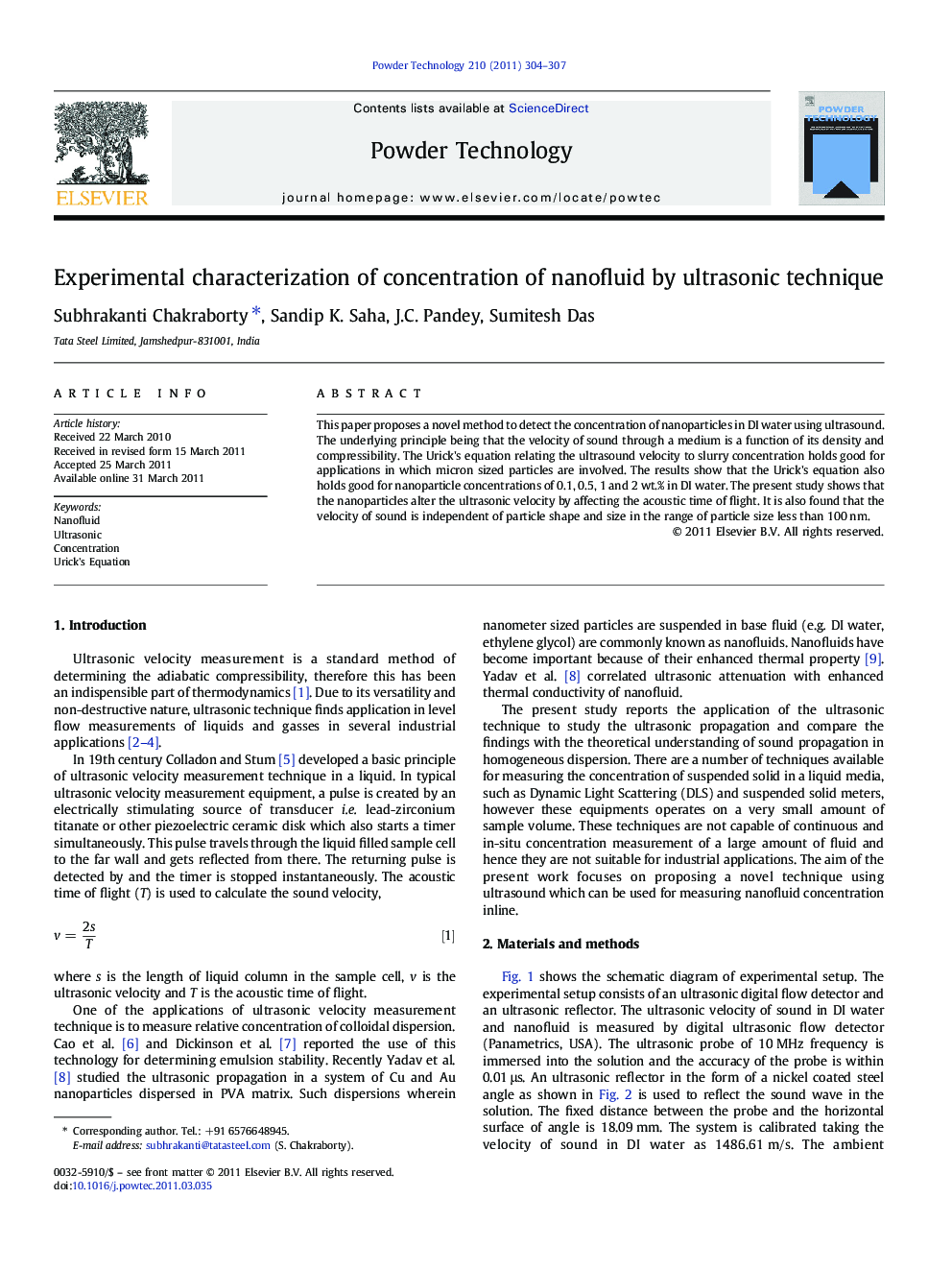| Article ID | Journal | Published Year | Pages | File Type |
|---|---|---|---|---|
| 237580 | Powder Technology | 2011 | 4 Pages |
This paper proposes a novel method to detect the concentration of nanoparticles in DI water using ultrasound. The underlying principle being that the velocity of sound through a medium is a function of its density and compressibility. The Urick's equation relating the ultrasound velocity to slurry concentration holds good for applications in which micron sized particles are involved. The results show that the Urick's equation also holds good for nanoparticle concentrations of 0.1, 0.5, 1 and 2 wt.% in DI water. The present study shows that the nanoparticles alter the ultrasonic velocity by affecting the acoustic time of flight. It is also found that the velocity of sound is independent of particle shape and size in the range of particle size less than 100 nm.
Graphical abstractThis article proposes a novel method of measuring concentration of nanofluid using ultrasonic technique. The figure shows the calculated and measured acoustic time of flight of ultrasonic wave at mass fractions of TiO2 and Al2O3 nanoparticles in DI water. It is found that the velocity of sound is independent of the particle shape and size <100 nm.Figure optionsDownload full-size imageDownload as PowerPoint slideResearch highlights►This paper proposes a novel method to detect the concentration of nanoparticles in DI water using ultrasound. ►The underlying principle being that the velocity of sound through a medium is a function of its density and compressibility. ►The theoretical equation for ultrasound velocity in a slurry holds good for nanoparticle concentrations of 0.1, 0.5, 1 and 2 wt.% in DI water ►The present study shows that the nanoparticles alter the ultrasonic velocity by affecting the acoustic time of flight. It is also found that the velocity of sound is independent of particle shape and size in the range of particle size less than 100 nm.
